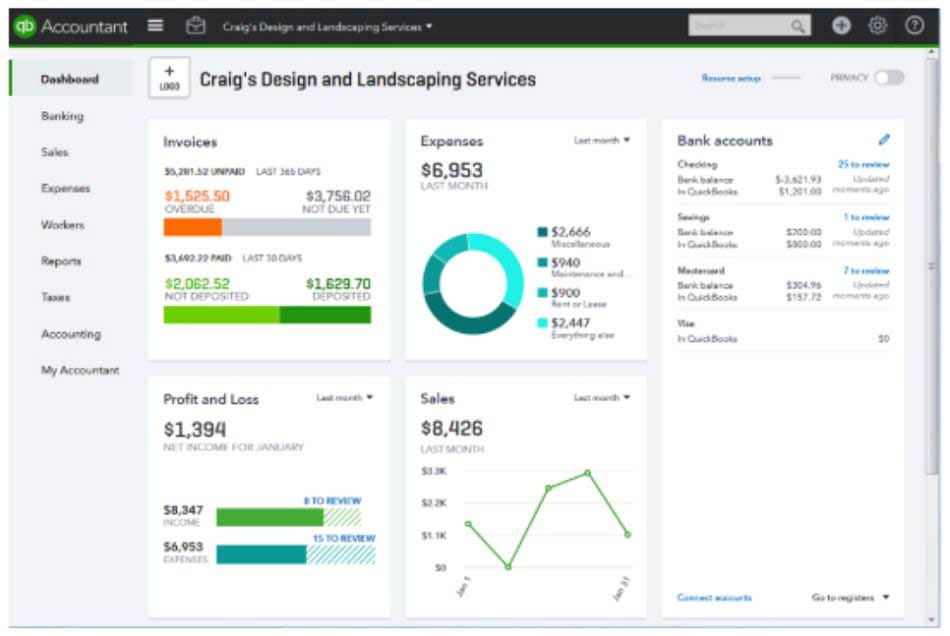Content

For the ratios to be useful, it should be analyzed compared to other companies in the same industry. This ratio is compared with the other companies in the same industry and is also observed over time. Financial ratio analysis is usually used by investors, analysts, and creditors. Profitability ratios are used to measure the ability of a company to generate earnings relative to the resources. You can then multiply the result by 100 to convert it into a percentage. The higher the profit margin, the more efficient the company is in converting sales to profits.
- ROE signifies the efficiency in which the company is using assets to make profit.
- Comparing companies can be illustrative – such as finding that Home Depot has a 33.6% gross profit margin versus Walmart’s 25.1%.
- Now, as we are comparing two similar companies, comparing the profitability makes sense.
- It gives you an idea of how well the company can meet its obligations in the next 12 months.
- They assess how many times per year the inventory turns or the receivables collected.
Changes from year to year are attributable to two major categories increases in Unrestricted Net Assets and changes in Restricted Net Assets . Also note, if the RoE is high, a good amount of cash is being generated by the company. Thus a higher ROE indicates a higher level of management performance. Set aside time to regularly look at your ratios and assess the health of your business. Doing that early and often can help you plan for and possibly avoid negative situations your business may experience. Cash flow is a challenge for many small businesses, and being paid quickly can mean the difference between a business struggling to pay bills or feeling very confident in its cash position.
Return On Equity Ratio
This can show you how well the company is managing its inventory as it relates to its sales. Liquidity ratios are vital with penny stocks, because smaller, newer companies often have a hard time paying all of their bills before they become stable and established.
GoCardless is authorised by the Financial Conduct Authority under the Payment Services Regulations 2017, registration number , for the provision of payment services. Attracting high net worth clients involves understanding their needs.
- That means the quick ratio is 1.5 ($8 million – $2 million/$4 million).
- You can pick and choose the most relevant of these key financial ratios to gain greater understanding of a company’s potential.
- These are valuable calculations because they help the company to see how it is doing over time, as well as how it is doing compared to its competitors.
- The debt-to-worth ratio is a measure of how dependent a company is on debt financing as compared to owner’s equity.
- While the gearing ratio measures the relative level of debt and long term finance, the interest cover ratio measures the cost of long term debt relative to earnings.
- Your quick ratio, also known as your acid test ratio, is similar to current ratio in that it’s a gauge of your business’s ability to pay its debts.
From ARBL’s balance sheet, the total asset for FY14 is Rs.2139Crs. The reported number is for the Financial Year 2014, which starts from 1st of April 2013 and close on 31st March 2014. This implies that at the start of the financial year 2014 , the company must have commenced its operation with assets carried forward from the previous financial year .
This is because ROTA is typically used to measure general management performance, and interest and taxes are controlled externally. Profitability Ratios – these include the Return on Total Assets, Return on Capital Employed, Net Profit Margin and Net Asset Turnover and are used to assess how profitable the company is. Shareholder FundsShareholder Fund is the fund available to stakeholders after all liabilities have been met in the event of a company’s liquidation.
The Earnings before Interest Tax Depreciation & Amortization margin indicates the efficiency of the management. EBITDA Margin tells us how profitable the company is at an operating level. It always makes sense to compare the company’s EBITDA margin versus its competitor to get a sense of the management’s efficiency in terms of managing their expense. Financial ratio analysis is a powerful tool of financial analysis that can give the business firm a complete picture of its financial performance on both a trend and an industry basis. Financial ratio analysis is used to extract information from the firm’s financial statements that can’t be evaluated simply from examining those statements.
Financial Ratios Inside A Business
The days’ receivables ratio measures how long accounts receivable are outstanding. Business owners will want as low a days’ receivables ratio as possible. After all, you want to use your cash to build your company, not to finance your customers. Also, the likelihood of nonpayment typically increases as time passes. That’s because the quick ratio looks only at a company’s most liquid assets and compares them to current liabilities. The quick ratio tests whether a business can meet its obligations even if adverse conditions occur. Ask yourself why key ratios are up or down compared to prior periods or to your competitors.
A quick ratio above 1 means your business has enough liquid assets to cover short-term obligations and maintain your operations. Or a seasoned entrepreneur who wants to take your company to the next level of growth? Either way, tracking financial ratios can help you analyze your company’s financial position and help you make more informed business decisions. Debt to Asset Ratio – A firm’s total debt divided by its total assets.
The Best Way To Use Financial Ratios
A ratio, you will remember from grammar school, is the relationship between two numbers. If the stock is selling for $60 per share, and the company’s earnings are $2 per share, the ratio of price ($60) to earnings ($2) is 30 to 1.

Investors and banks use financial ratios to judge the strength of a business. They’re also used by financial auditors who want insight into a company’s financial statements. The formula is current assets not including inventory, divided by current liabilities. This is a better way to evaluate the liquidity of a business than the current ratio when its inventory takes a long time to sell. Financial ratios compare different line items in the financial statements to yield insights into the condition and results of a business. These ratios are most commonly employed by individuals outside of a business, since employees typically have more detailed information available to them. Financial ratios are useful indicators of a firm’s performance and financial situation.
Explore Business Topics
In general, quick ratios between 0.5 and 1 are considered satisfactory—as long as the collection of receivables is not expected to slow. Even small changes of 1% or 2% in the gross profit margin can affect a business severely. After all, if your profit margin drops from 5% of sales to 4%, that means your profits have declined by 20%.

Common size ratios allow you to make knowledgeable comparisons with past financial statements for your own company and to assess trends—both positive and negative—in your financial statements. Another source of information is “Industry Norms and Key Business Ratios,” published by Dun and Bradstreet. It is compiled from D&B’s vast databases of information on businesses. It lists https://www.bookstime.com/ for hundreds of industries, and is available in academic and public libraries that serve business communities.
Stability Ratios
When a company has liquidity troubles, it may have trouble paying employees and suppliers and covering other daily operating expenses, leading to big problems. Financial ratios are important because they give business owners a way to evaluate financial performance beyond financial statements and compare it to similar businesses in their industry. This calculator is designed to show you 10 different financial ratios. Financial ratios are used as indicators that allow you to zero in on areas of your business that may need attention such as solvency, liquidity, operational efficiency and profitability. The Leverage ratios also referred to as solvency ratios/ gearing ratios measures the company’s ability to sustain its day to day operations. Leverage ratios measure the extent to which the company uses the debt to finance growth. Remember for the company to sustain its operations, it has to pay its bills and obligations.

In contrast, companies, which are not profitable but are cash rich, do not survive in the long term either. Such companies are taken over for their cash flow or by others who believe that they can improve the profitability of the business. Thus, those companies that do succeed and survive over the long term have a well-rounded financial profile, and perform well in all aspects of financial analysis.
Days working capital indicates the number of days required to convert your working capital into sales. We’ll look at 10 ratios across these four categories and provide a detailed walkthrough for each. Return on Investment – A firm’s net income divided by the owner’s original investment in the firm. Return on Capital employed indicates the overall return the company generates considering both the equity and debt. I understand this is a lengthy way to calculate RoE, but this is perhaps the best way to calculate RoE, we can develop valuable insights into the business. DuPont model not only answers what the return is but also the quality of the return.
- A ratio is a relationship between two specific numerical values that provides a required estimated measurement.
- Short-term liquidity ratios measure the relationship between current liabilities and current assets.
- Earnings per share is the portion of a company’s profit allocated to each outstanding share of common stock, serving as a profitability indicator.
- For example, if the financial leverage is 4, for every Rs.1 of equity, the company supports Rs.4 worth of assets.
- Financial ratios are good key performance indicators used to measure a company’s performance over time compared to competitors and the industry.
She has three years of professional experience in a higher education environment. Almanac of Business and Industrial Financial Ratios, annual, by Leo Troy.
If the ratio is less than 1, one can use it to purchase fixed assets. This ratio is used to know whether the company is having good fun or not to meet the long-term business requirement. A DSCR of less than 1.0 implies that the operating cash flows are insufficient for debt servicing, indicating negative cash flows. Financial Ratios Tells us whether the operating income is sufficient to pay off all obligations related to debt in a year. It is the ratio of net income to turnover expressed in percentage. Liquidity refers to the ease with which an asset, or security, can be converted into ready cash without affecting its market price.
For instance a company with a declining ROE could be seen as having more risk than a company in the same industry with an increasing ROI. Companies use the return on assets ratio to determine how much profits they generate from total assets or resources, including current and noncurrent assets. The debt ratio measures the proportion of debt a company has to its total assets. Businesses use financial ratios to determine liquidity, debt concentration, growth, profitability, and market value. Financial ratios are basic calculations using quantitative data from a company’s financial statements.
Considering ARBL has little debt, Financial Leverage of 1.61 is indeed an encouraging number. The number above indicates that for every Rs.1 of Equity, ARBL supports Rs.1.61 of assets. This means for every Rs.1 of asset deployed; the company is generating Rs.1.75 in revenues. Clearly, it appears that both the EBITDA margin and EBITDA growth are quite impressive. To find out if it is the best one needs to compare these numbers with its competitors. I would encourage you to do the same for Exide and compare the results. Rosemary Carlson is an expert in finance who writes for The Balance Small Business.
Important Financial Ratios
How much cash, working capital, cash flow, or earnings do you get for each dollar you invest? These are also referred to as “market ratios,” because they gauge how strong a company appears on the market. The debt ratio compares a business’s debt to its assets as a whole. A debt-to-equity ratio looks at its overall debt, compared to its capital supplied by investors. A lower number is often safer with this ratio, although it can imply a highly cautious, risk-averse company if it’s too low.
Earnings per share is the portion of a company’s profit allocated to each outstanding share of common stock, serving as a profitability indicator. The acid-test ratio is a strong indicator of whether a firm has sufficient short-term assets to cover its immediate liabilities. Fundamental analysis is the analysis of a security to discover its true value.
ROE signifies the efficiency in which the company is using assets to make profit. This financial ratio measures profitability concerning the total capital employed in a business enterprise. A P/E ratio measures the relationship of a stock’s price to earnings per share. A lower P/E ratio can indicate that a stock is undervalued and perhaps worth buying. However, it could be low because the company isn’t financially healthy. The working capital ratio, like working capital, compares current assets to current liabilities and is a metric used to measure liquidity. The working capital ratio is calculated by dividing current assets by current liabilities.
Short-term liquidity ratios – these include the current ratio and the acid test ratio and measure how easily the company can meet its short-term financial commitments like paying its bills. Financial ratios are good key performance indicators used to measure a company’s performance over time compared to competitors and the industry.
Gross profit margin measures profitability at a very fundamental level. A high ratio means that the company can cover its interest payments multiple times over, making it hard to default. The high ratio can indicate increased revenue generated before payment of taxes and interest. A good balance between how quickly you settle with your creditors within the agreed terms and a maximum use of cash in your business is necessary. Increased purchasing or reduction of accounts payable will increase this ratio.